
The 2019 planting season feels like it has moved along at a snail’s pace so far this spring, but farmers did make some decent progress after putting another 16% of this year’s crop in the ground last week, according to the latest round of USDA crop progress data, out Monday afternoon.
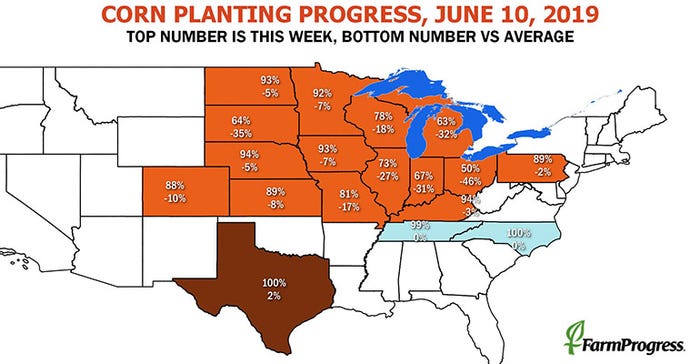
Corn plantings reached 83% for the week ending June 9 – up from 67% the prior week and in line with analyst expectations. However, the crop is typically much nearer the finish line by early June, with 2018’s pace and the five-year average both 99% by this time.
Each of the top 18 production states have now passed the halfway mark, but some states in the eastern Corn Belt such as Indiana (67%), Michigan (63%) and Ohio (50%) still have large amounts of acres to go. Per USDA, only two states – North Carolina and Texas – have reached 100% so far.
Another 62% of this year’s crop is now emerged, up from the prior week’s tally of 46% but still far behind last year’s pace and the five-year average, both at 93%.
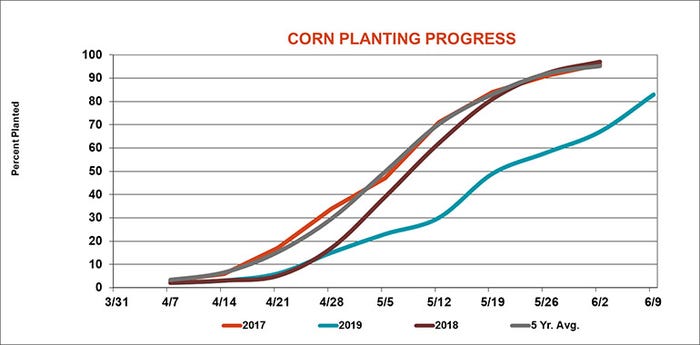
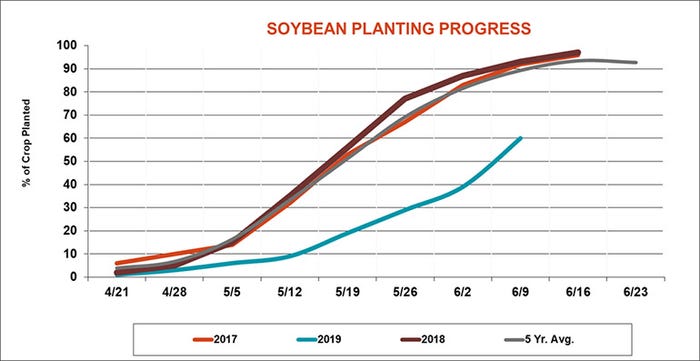
“Growers made good progress planting last week but are racing the clock, facing both increased yield drag and lower crop insurance coverage,” says Farm Futures senior grain market analyst Bryce Knorr. “It’s impossible to know what the 83% planted figure means, because prevent plant coverage likely will be taken on some unplanted fields. There’s a risk harvested acres could be down 10 million from USDA’s May estimate, though the agency won’t update its forecast in tomorrow’s monthly report.”
Knorr expects the government’s estimate of yields with normal summer weather to fall around 8 bushels per acre due to planting delays.
“That would take the projected yield down to 168 bpa, which actually isn’t far from the 170.5 figure put out by our model based on state ratings today,” he says. “Still, all of these estimates are guesses. There’s a 67% chance the yield will fall between 159 and 175 based on historical weather patterns in El Niño years.”
Corn crop quality managed to best analyst expectations, however, with USDA placing 59% in good-to-excellent condition. The agency rated another 32% of the crop in fair condition, with the remaining 9% rated poor or very poor. USDA will continue to update these numbers each week through harvest.
“Initial ratings for corn are likely unrealistically high, based on reports we’ve received from growers, though they are well below average,” Knorr notes.

Soybean planting progress reached 60% last week, versus the prior week’s mark of 39% and ahead of analyst expectations of 56%. The crop is still significantly behind 2018’s pace of 92% and the five-year average of 88%, however.
“The latest push may be an indication that many farmers gave up on corn, took prevent plant, and got out their drills,” Knorr says. “Final planting dates for soybeans are starting to fall this week, which could also be an issue.”
Of the top 18 production states, seven are not even at 50% planted, including Illinois (49%), Indiana (42%), Kansas (48%), Michigan (45%), Missouri (37%), Ohio (32%) and South Dakota (32%). Southern states Mississippi (85%) and Louisiana (95%), along with North Dakota (88%), continue to lead the charge for now.
Another 34% of this year’s soybean crop is now emerged, versus 19% the prior week, 82% in 2018 and a five-year average of 73%.
With corn and soybean acres still getting planted, the 2018/19 winter wheat harvest is just kicking off in southern states such as Arkansas (27%), North Carolina (31%), Oklahoma (4%) and Texas (27%). Nationwide, 4% of the harvest is now complete.
USDA held steady its quality assessments for this year’s winter wheat crop, with 64% in good-to-excellent condition. Analysts expected the agency to lower that number to 63%. Another 27% of the crop is rated fair, with the remaining 9% rated poor or very poor – all unchanged from a week ago.
But Knorr has been tracking yield potential changes, which vary depending on where you’re looking on the map.

“Hard red winter wheat prospects improved on the Plains, while soft red wheat and the Pacific Northwest mostly faded,” he says. “USDA updates winter wheat production estimates Tuesday, which could show whether rain is limiting process.”
And spring wheat planting is nearly complete, reaching 97% this past week. That’s an improvement from 93% the week prior and just behind 2018’s pace and the five-year average of 99%. Emergence is now at 85%, up from 69% last week.
Farmers have no doubt been through a unique set of trials and challenges this spring. To learn more, don’t miss our exclusive feature, “A mad scramble to the finish line,” from Farm Futures executive editor Mike Wilson.
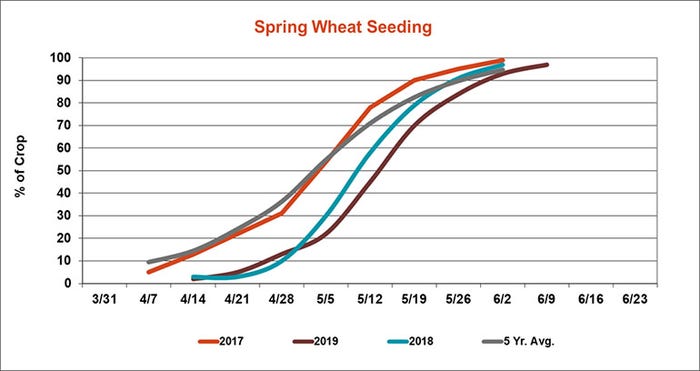
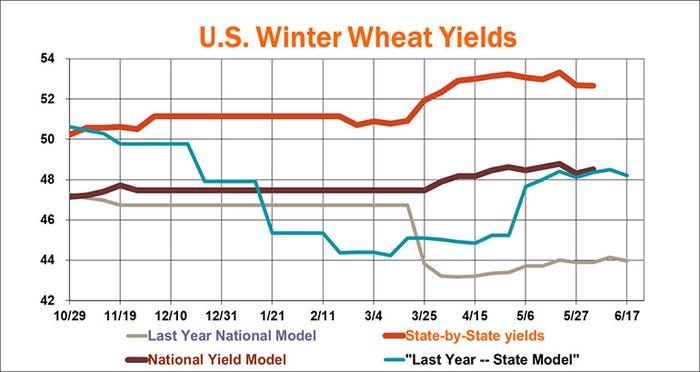
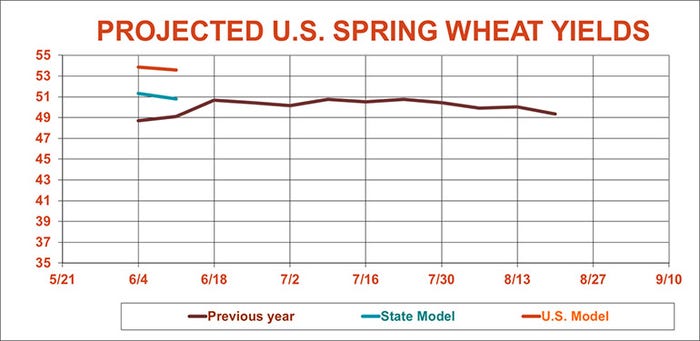
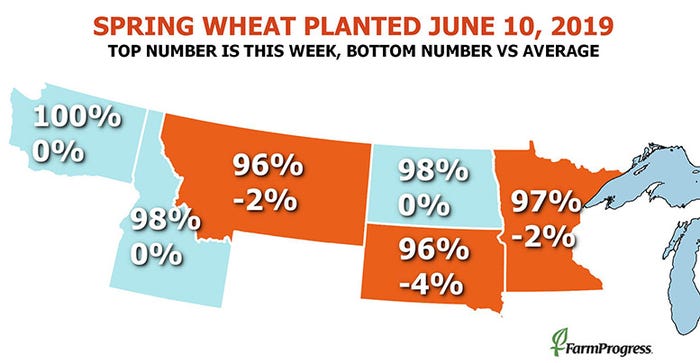
About the Author(s)
You May Also Like






